|
Getting your Trinity Audio player ready...
|
Recently we are seeing a return to edition-based publishing in the industry, whether it be through reinvesting in existing digital editions, getting out of the breaking news game all together (à la The Times and The Sunday Times), or through creating new digital-only editions.
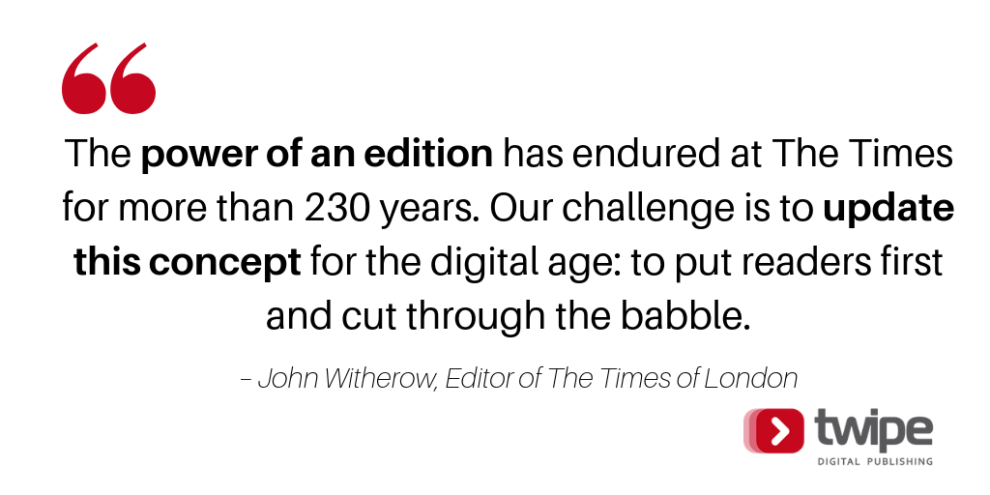
Today we examine further this growing trend, through understanding exactly what an edition is, how it can be brought into the digital age, and highlighting three innovative cases of publishers succeeding with “digital-only editions”.
Defining the edition concept
Although editions are something we spend a lot of time thinking about at Twipe, the concept is not nearly as clear for many in the publishing industry. In short, an edition is a bundled package of content.

Editions are the core of what publishers have been perfecting for hundreds of years, refining the design and hierarchy in to what we know today as the newspaper.
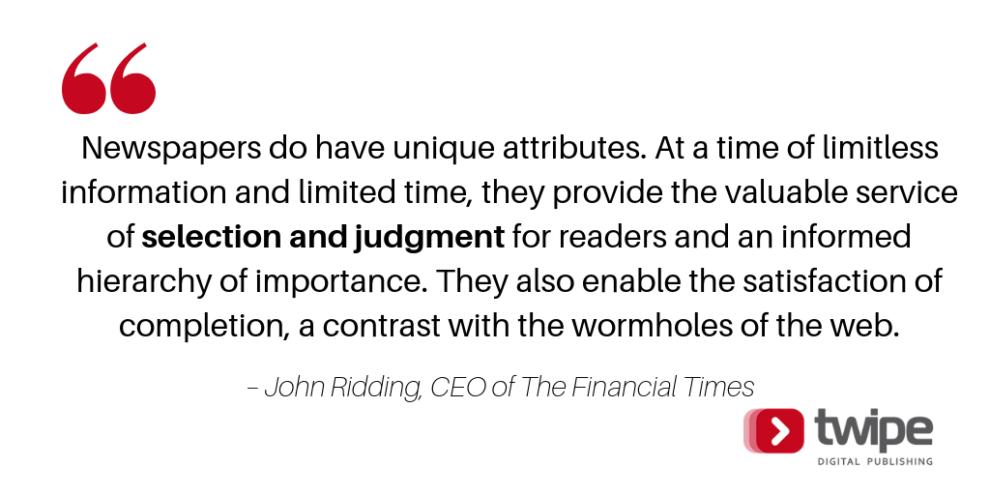
When newspapers first went online, publishers viewed their value proposition as purely the content they created, so articles were simply published to their websites. The design and hierarchy that had been perfected over time was missing. Publishers didn’t seem to understand that it was actually the product they offered that was valuable to readers. Having a collection of curated stories, placed in a well thought-out order, is especially important in today’s world where keeping up with the news can feel overwhelming.
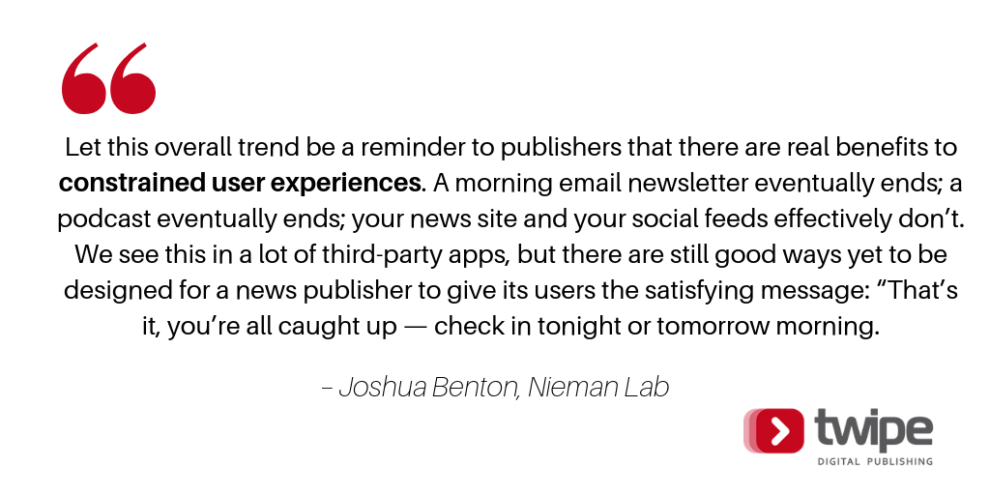
Serving reader groups with editions versus newsflow
Until recently, the digital presence of many publishers was in the newsflow format. We can see editions as a new (old) way of presenting content, the contrast of newsflow.
- Newsflow: continuously updating stream of information throughout the day
- Edition: a daily bundled package of content, with a clear beginning and end
Both formats have unique characteristics that engage two distinct groups of readers. In part two of our Reinventing Digital Editions series, Reader Insights, we surveyed over 4,000 news readers in Europe and the US to under their news habits, format preferences, and willingness to pay for digital news. A key finding was the nearly even split on news format preferences. Holding true across countries, and more importantly across age groups, we see a roughly 50/50 split on readers who prefer the newsflow format or the editions format.
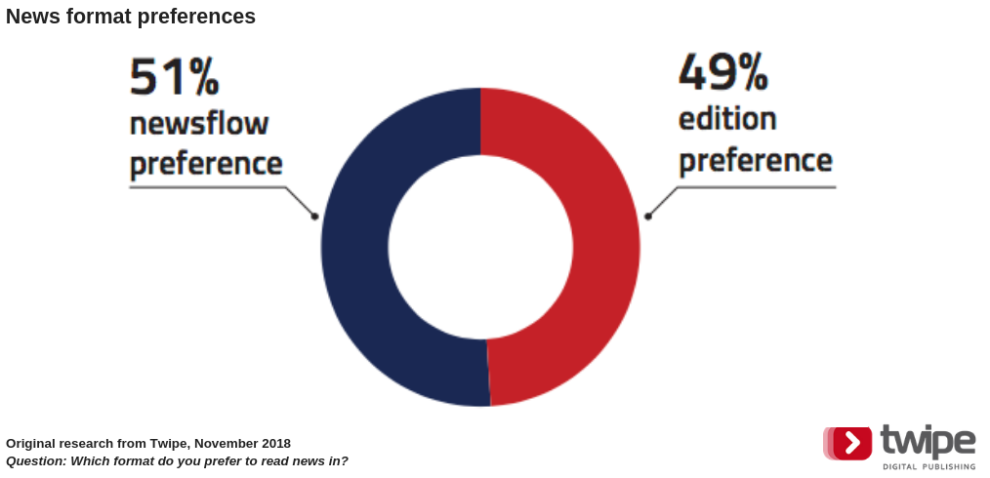
While publishers should endeavour to engage both types of readers with their digital product strategies, it is edition readers who may be most valuable. Our research found that edition readers are less likely to seek out free news, less price sensitive for news, more loyal, and read for longer sessions.
Cases: Digital-only editions
Longtime readers may remember our first report in our Reinventing Digital Editions series, in which we examined the trend of “digital-only editions.” We define digital-only editions as bundles of finite content, published via digital channels with a certain frequency, belonging to a series, and with no counterpart in print.
Released early last year, we have since seen reader revenue strategies become a higher priority for many publishers, and the need to create digital habits grow in importance for newspapers. The publishers we previously profiled were ahead of the curve, choosing to address these issues by the creation of new digital-only products.
Since the report was published, we have seen a variety of newspapers, especially in the United States, become digital-only on certain days of the week. We’ve also seen closed newspapers re-launch as digital-only products in the edition format, such as Times Select in South Africa.
Consolidation of The Economist’s Espresso
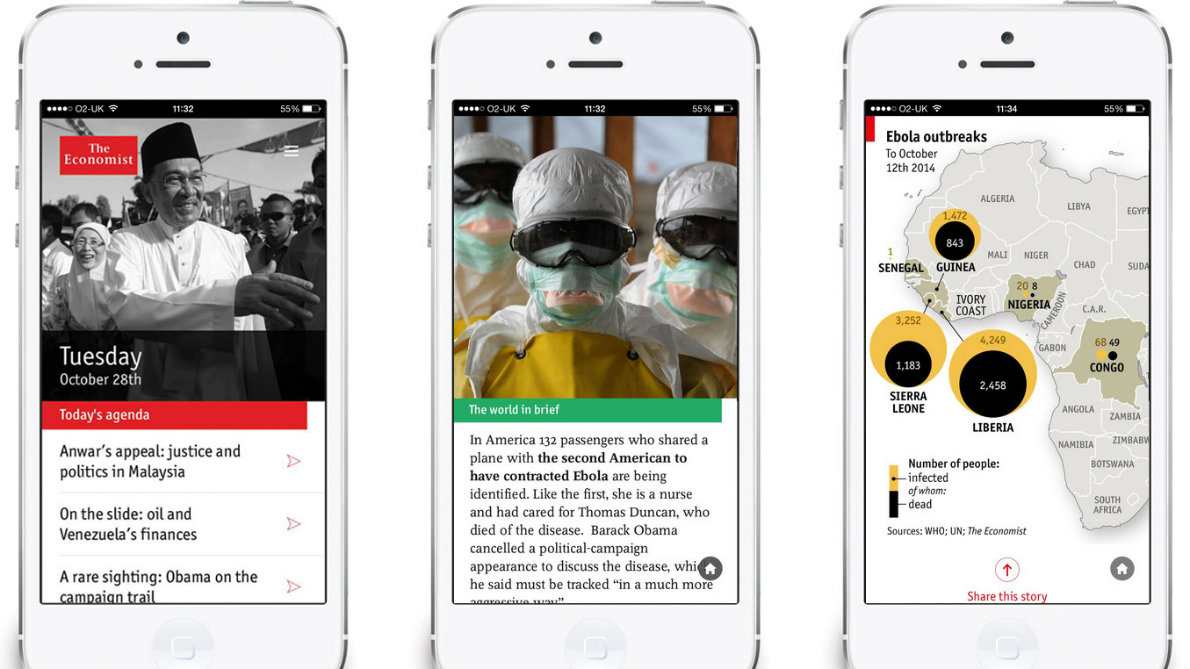
With just eight stories published six days a week, Espresso is intended as a “shot of the news” for busy readers. Indeed, even within these eight stories, much attention is paid to making the main points readily visible, through compelling charts, infographics, and quotes. Overall, it is a very visually engaging experience.
Since we last profiled this edition, The Economist has released a redesigned app for all of its digital products. While Espresso is still available as a standalone app, it’s also available in the all-in Economist app. We are interested to see how this strategy evolves for the Economist, and other publishers following suit.
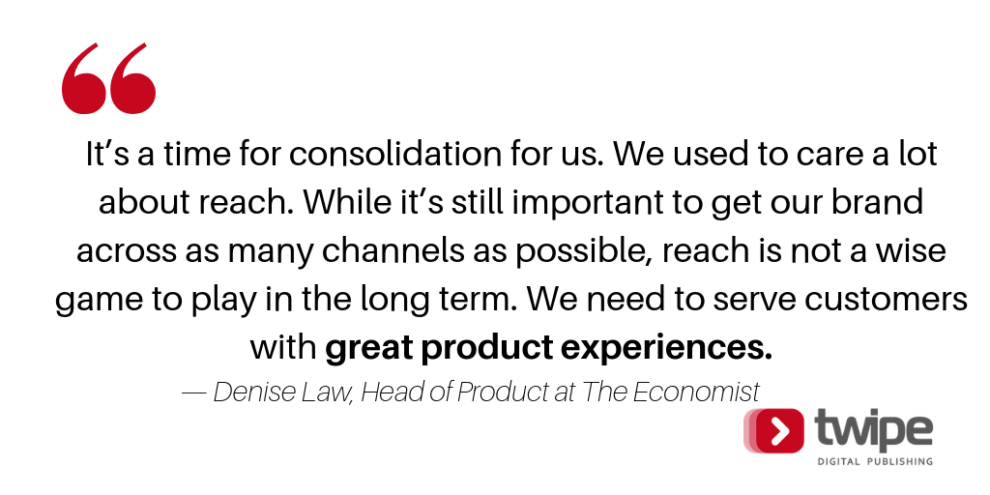
LaMatinale from Le Monde: ahead of the story trend

Ever since Reuters announced that it predicts the story format, such as on Instagram or Snapchat, is expected to surpass feeds as the main way people share news with friends within the year, we have seen publishers scrambling to incorporate the story format into their digital strategy. As an early adopter of Snapchat Discover, Le Monde has been long ahead of this curve. A team of seven is dedicated to creating stories just for Snapchat, which are generally ‘hard news’ stories adapted for a younger audience. Topics that are interesting for millennials but not covered as in-depth in Le Monde are also published.
Le Monde also pioneered the story format off social media as well with the launch of La Matinale, which uses an innovative Tinder-like swiping feature to let readers build a reading list from the articles in the edition. We expect to see more news product take on similar design this year, as the “story format” continues to grow in importance.
L’édition du Soir from Ouest-France celebrates five years
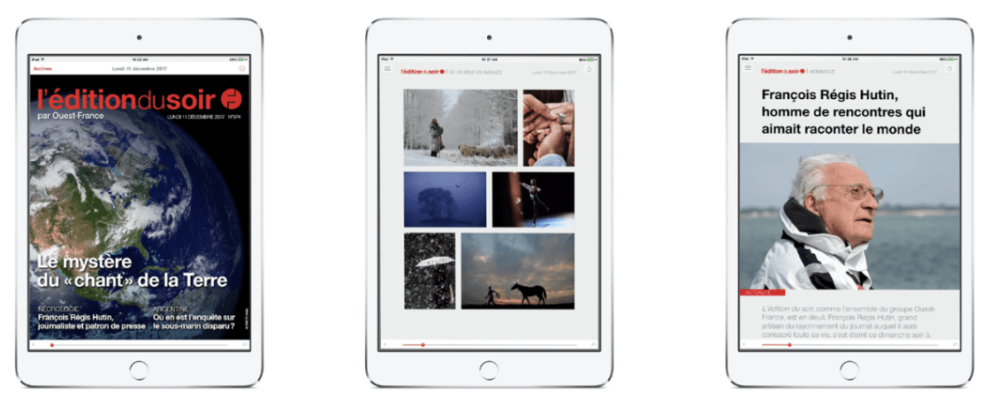
Ouest-France‘s L’édition du Soir is another product we have seen a lot of interest in since our report was released. Having recently celebrated its fifth anniversary, we can understand why the industry is so interested in this success story. While we know some publishers in other countries have tried similar concepts before stopping after two or three years, we see L’édition du Soir only continuing to grow. Recently Ouest-France announced that it now engages nearly two million readers a month, with an average of 130,000 recurring users.
This edition, the first digital-only newspaper in France, was created after Ouest-France noticed their audience’s reading habits had changed, with more reading happening in the evening. In order to leverage this new moment of consumption, they created a whole new edition to meet their readers’ changing needs.

To target these readers who are looking for something to read during their commute from work or while relaxing at home, Ouest-France created L’édition du Soir, published each weeknight at 6 PM. The edition is also optimised for the interests of readers during this time period, so there are more games and puzzles to help readers relax, in addition to reading the news. We see that this is a very visual experience, with many compelling images and videos. As Ouest-France plans to further invest in, and develop this product, we will make sure to cover any new updates in the future.
As we get further into 2019, we expect to see more digital news products in the style of these editions become available on the market. As inspiration for your own digital product strategy, make sure to read the full report which details more in-depth what has led to success for these products.
Mary-Katharine Phillips
Media innovation analyst @ Twipe
Republished with kind permission of Twipe Mobile


